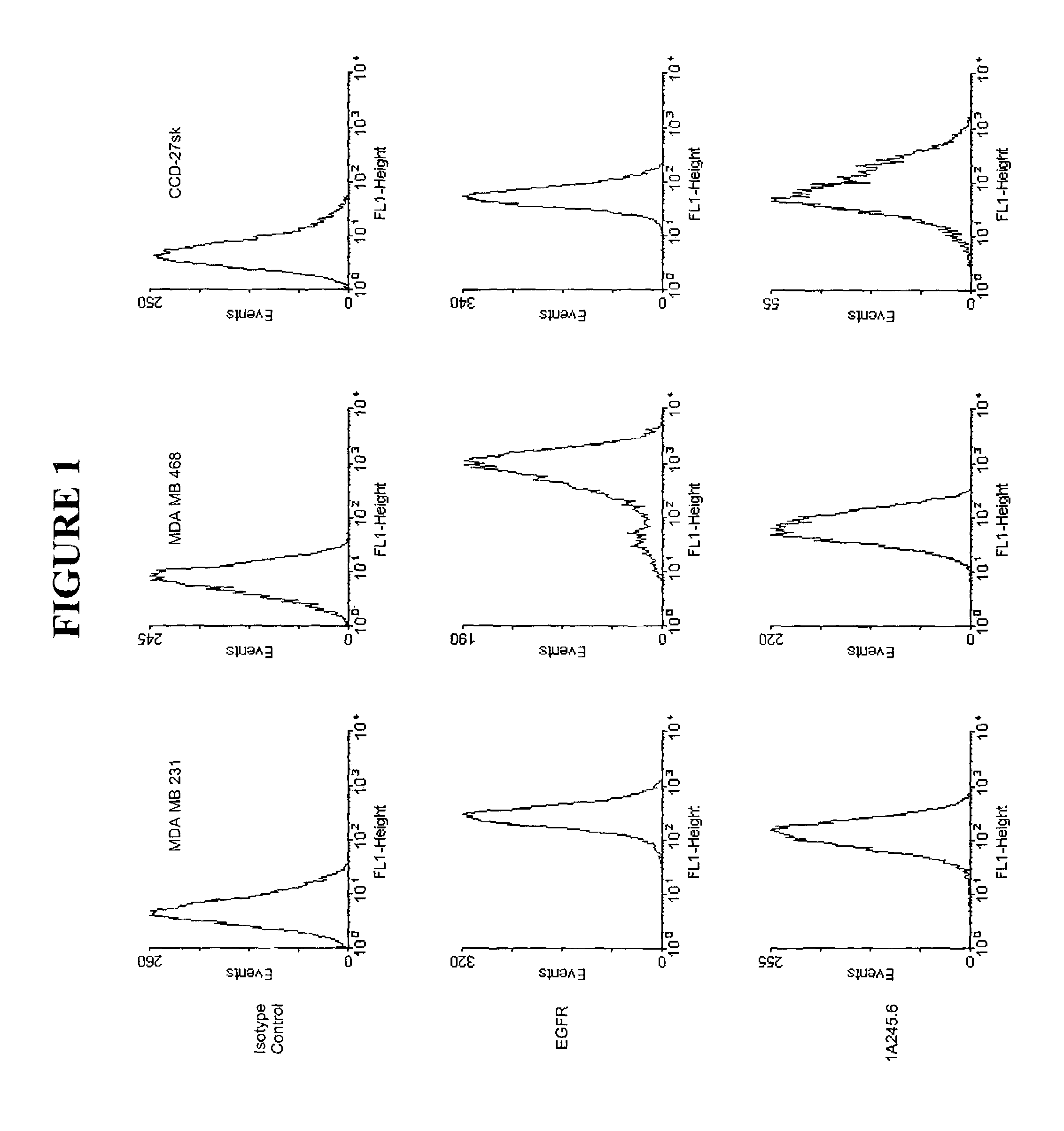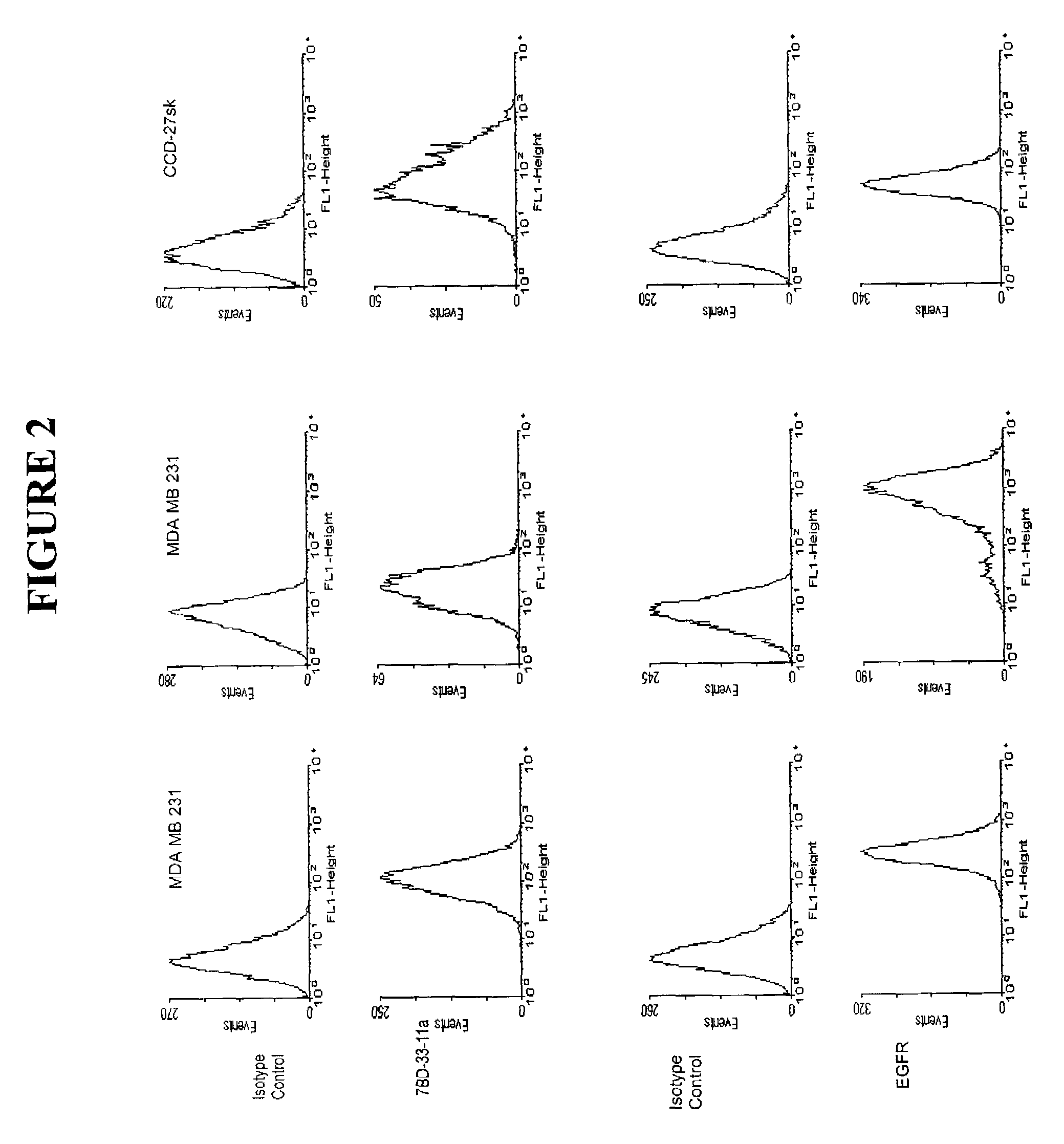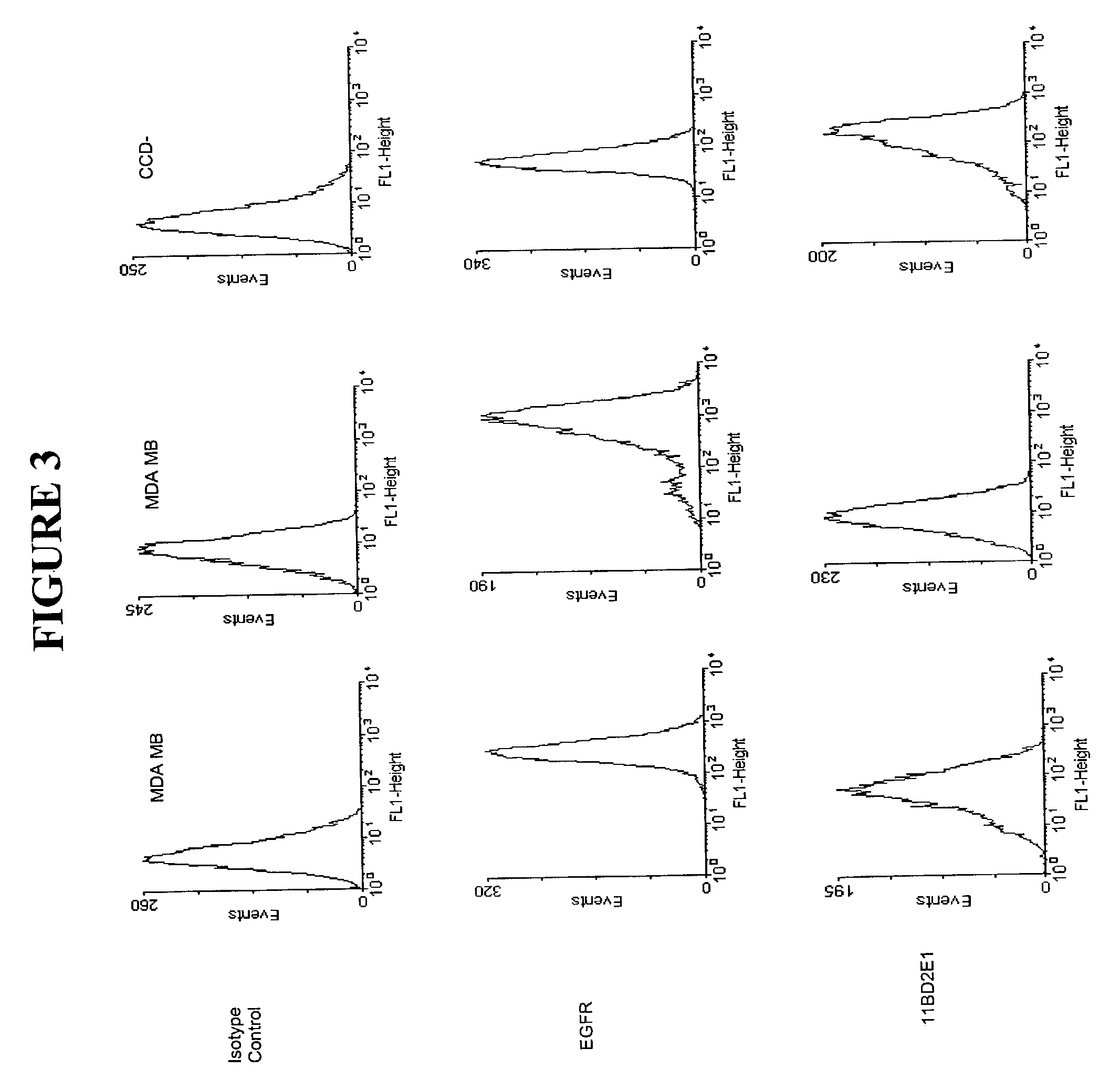Cancerous disease modifying antibodies
a technology of cancerous disease and antibody, which is applied in the field of isolation and production of cancerous disease modifying antibodies, can solve the problems of increased probability of treatment failure, metastases, and ultimately death, and achieve the effect of reducing the likelihood of emergence of treatment resistant cells
- Summary
- Abstract
- Description
- Claims
- Application Information
AI Technical Summary
Benefits of technology
Problems solved by technology
Method used
Image
Examples
example 2
Antibody Production
[0054]Monoclonal antibodies were produced by culturing the hybridomas, 7BD-33-11A, 1A245.6, 11BD-2E11-2, in CL-1000 flasks (BD Biosciences, Oakville, ON) with collections and reseeding occurring twice / week and standard antibody purification procedures with Protein G Sepharose 4 Fast Flow (Amersham Biosciences, Baie d'Urfé, QC). It is within the scope of this invention to utilize monoclonal antibodies which are humanized, chimerized or murine antibodies. 7BD-33-11A, 1A245.6, 11BD-2E11-2 were compared to a number of both positive (anti-Fas (EOS9.1, IgM, kappa, 20 micrograms / mL, eBioscience, San Diego, Calif.), anti-Her2 / neu (IgG1, kappa, 10 microgram / mL, Inter Medico, Markham, ON), anti-EGFR (C225, IgG1, kappa, 5 microgram / mL, Cedarlane, Hornby, ON), Cycloheximide (100 micromolar, Sigma, Oakville, ON), NaN3 (0.1%, Sigma, Oakville, ON)) and negative (107.3 (anti-TNP, IgG1, kappa, 20 microgram / mL, BD Biosciences, Oakville, ON), G155-178 (anti-TNP, IgG2a, kappa, 20 mic...
example 3
In Vivo Experiments
[0059]Now with reference to the data shown in FIGS. 5 and 6, four to eight week old, female SCID mice were implanted with 5 million MDA-MB-231 human breast cancer cells in one hundred microliters injected subcutaneously in the scruff of the neck. The mice were randomly divided into four treatment groups of ten. On the day prior to implantation 20 mg / kg of either 11BD2E-11-2, 7BD-33-11A, 1A245.6 test antibodies or 3BD-27 isotype control antibody (known not to bind MDA-MB-231 cells) were administered intrapertioneally at a volume of 300 microliters after dilution from the stock concentration with a diluent that contained 2.7 mM KCl, 1 mM KH2PO4,137 mM NaCl, 20 mM Na2HPO4. The antibodies were then administered once per week for a period of 7 weeks in the same fashion.
[0060]Tumor growth was measured about every seventh day with calipers for up to ten weeks or until individual animals reached the Canadian Council for Animal Care (CCAC) end-points. Body weights of the a...
example 4
In Vivo Established Tumor Experiments
[0062]Five to six week old, female SCID mice were implanted with 5 million MDA-MB-231 breast cancer cells in one hundred microliters injected subcutaneously in the scruff of the neck. Tumor growth was measured with calipers every week. When the majority of the cohort reached a tumor volume of 100 mm3 (range 50–200 mm3) at 34 days post implantation 8–10 mice were randomly assigned into each of three treatment groups. 7BD-33-11A, 1A245.6 test antibodies or 3BD-27 isotype control antibody (known not to bind MDA-MB-231 cells) were administered intrapertioneally with 15 mg / kg of antibodies at a volume of 150 microliters after dilution from the stock concentration with a diluent that contained 2.7 mM KCl, 1 mM KH2PO4, 137 mM NaCl, 20 mM Na2HPO4. The antibodies were then administered three times per week for 10 doses in total in the same fashion until day 56 post-implantation. Tumor growth was measured about every seventh day with calipers until day 59 ...
PUM
| Property | Measurement | Unit |
|---|---|---|
| concentration | aaaaa | aaaaa |
| volume | aaaaa | aaaaa |
| volume | aaaaa | aaaaa |
Abstract
Description
Claims
Application Information
 Login to View More
Login to View More - R&D
- Intellectual Property
- Life Sciences
- Materials
- Tech Scout
- Unparalleled Data Quality
- Higher Quality Content
- 60% Fewer Hallucinations
Browse by: Latest US Patents, China's latest patents, Technical Efficacy Thesaurus, Application Domain, Technology Topic, Popular Technical Reports.
© 2025 PatSnap. All rights reserved.Legal|Privacy policy|Modern Slavery Act Transparency Statement|Sitemap|About US| Contact US: help@patsnap.com



